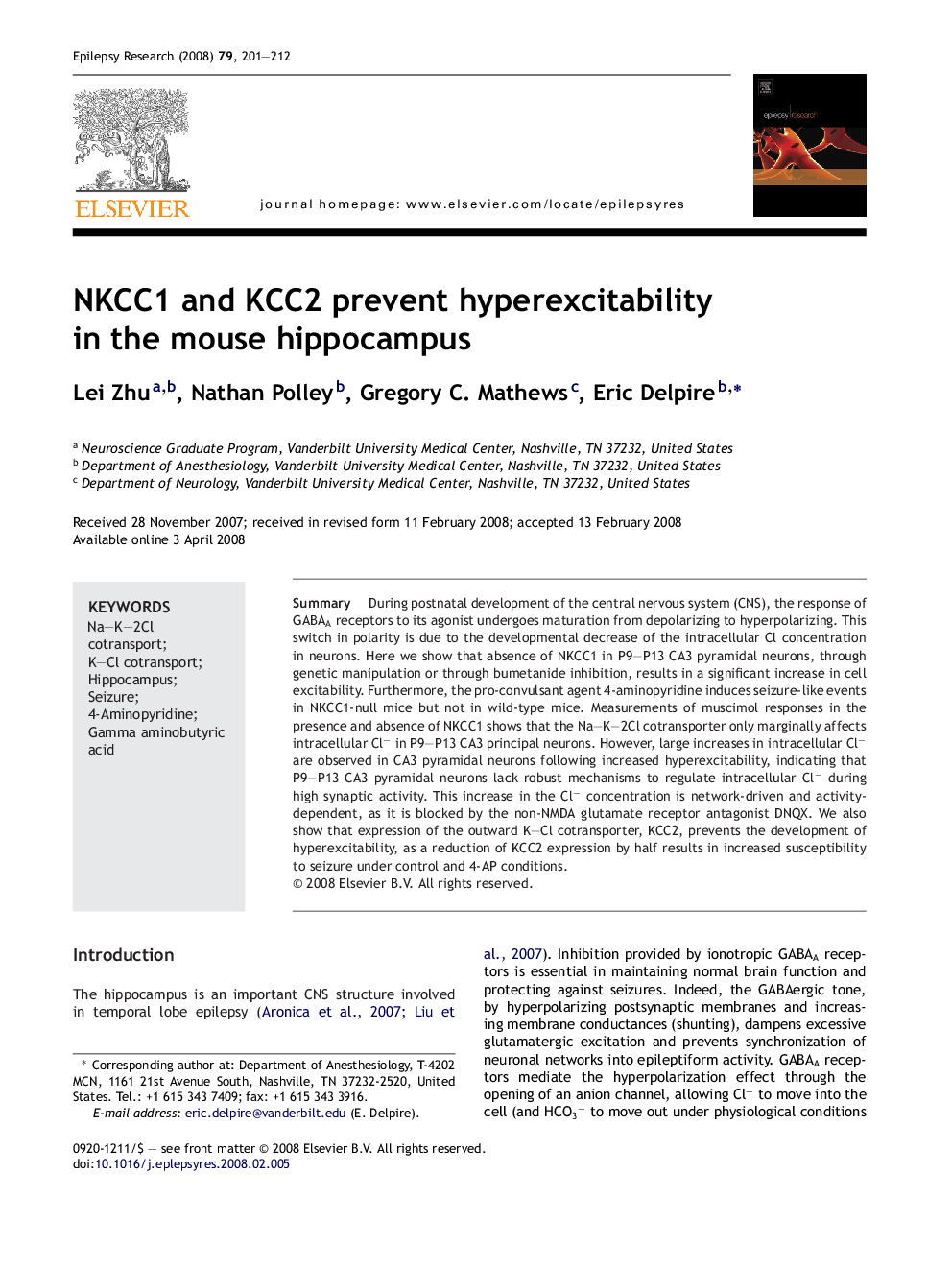| کد مقاله | کد نشریه | سال انتشار | مقاله انگلیسی | نسخه تمام متن |
|---|---|---|---|---|
| 3052979 | 1579945 | 2008 | 12 صفحه PDF | دانلود رایگان |

SummaryDuring postnatal development of the central nervous system (CNS), the response of GABAA receptors to its agonist undergoes maturation from depolarizing to hyperpolarizing. This switch in polarity is due to the developmental decrease of the intracellular Cl concentration in neurons. Here we show that absence of NKCC1 in P9–P13 CA3 pyramidal neurons, through genetic manipulation or through bumetanide inhibition, results in a significant increase in cell excitability. Furthermore, the pro-convulsant agent 4-aminopyridine induces seizure-like events in NKCC1-null mice but not in wild-type mice. Measurements of muscimol responses in the presence and absence of NKCC1 shows that the Na–K–2Cl cotransporter only marginally affects intracellular Cl− in P9–P13 CA3 principal neurons. However, large increases in intracellular Cl− are observed in CA3 pyramidal neurons following increased hyperexcitability, indicating that P9–P13 CA3 pyramidal neurons lack robust mechanisms to regulate intracellular Cl− during high synaptic activity. This increase in the Cl− concentration is network-driven and activity-dependent, as it is blocked by the non-NMDA glutamate receptor antagonist DNQX. We also show that expression of the outward K–Cl cotransporter, KCC2, prevents the development of hyperexcitability, as a reduction of KCC2 expression by half results in increased susceptibility to seizure under control and 4-AP conditions.
Journal: Epilepsy Research - Volume 79, Issues 2–3, May 2008, Pages 201–212